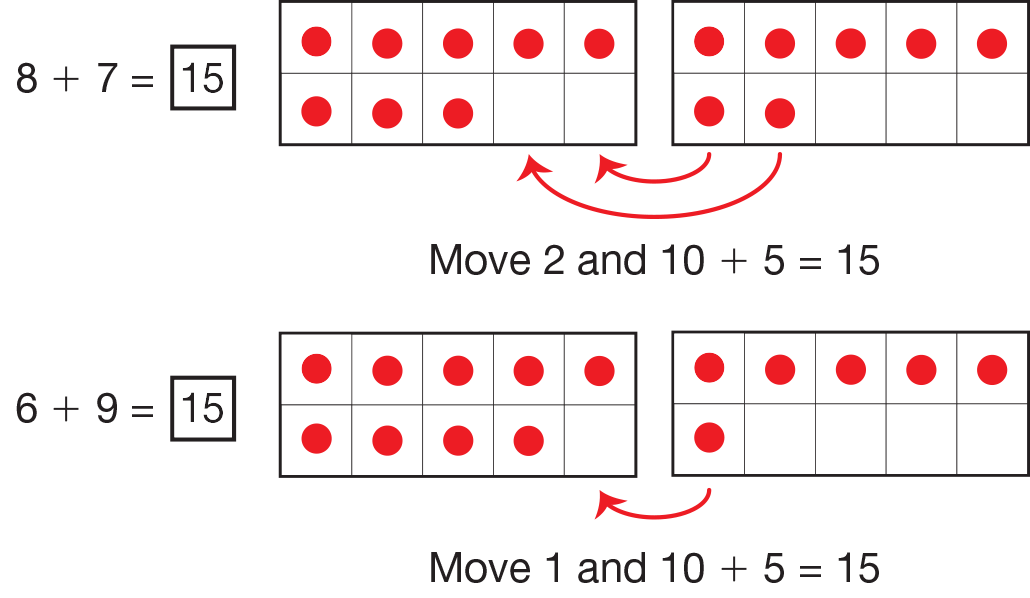Students use their prior knowledge of place value of numbers from 10 to 20 and the partitions of ten to develop strategies for adding numbers with sums in the teens. They learn to break apart numbers to make ten.
Content in this Lesson
- Using mental math strategies and reasoning strategies (e.g., using doubles, using ten, making ten) to solve addition problems with sums between 10 and 20 [E5].
- Using strategies that apply the properties of addition (e.g., turn-around, compose and decompose numbers) to solve addition problems [E6].
- Finding a strategy [MPE2].
- Showing work [MPE5].
Assessment in this Lesson
| Assessment | Expectation Assessed | Math Practices Expectation Assessed |
|---|---|---|
|
Two More Problems |
|
|

















